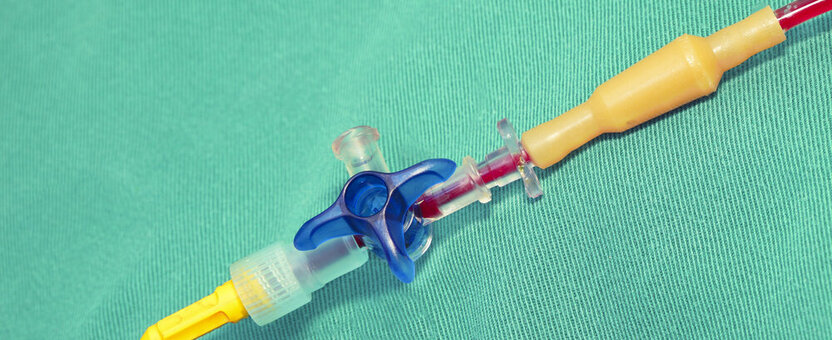
Bisphenol A
|
The information on this page is adapted from toxipedia.org. To learn more about Toxipedia’s integration into our website, visit our Toxipedia webpage. |
Bisphenol A (BPA) is a synthesized chemical used widely in many products. This page describes its use and impacts on health.
BPA was created in the late nineteenth century by the Russian Aleksandr Dianin, who coined it "Dianin's Compound." With more than six million pounds produced in the US each year, BPA is used primarily as a strengthener in polycarbonate plastics and epoxy resins.
Common Uses of BPA
BPA is widely used primarily as a strengthener in polycarbonate plastics and epoxy resins in many products including these:1
|
image from IFPRI-IMAGES at Creative commons |
- Baby bottles and nursing products
- Dental sealants and orthodontic products
- CDs and DVDs
- Eyeglasses
- Medical equipment and tubing
- Consumer electronics
- PVC
- Plasticizers
- Water bottles and other food and beverage containers
- Lacquers to coat metal products such as food cans, bottle tops, and water supply pipes
- Impact-resistant safety equipment, such as sports safety equipment
Bisphenol A is also used for unsaturated polyester, polysulfone, and polyetherimide. Nonpolymer BPA is used as an additive in flame retardants, brake fluids, and thermal papers.2 BPA has been produced by General Electric, Dow Industries, Shell Corporation, Mitsubishi, and Bayer.3
Chemical Background
BPA has two large phenyl groups, as well as two electron-rich hydroxyl (or alcohol) groups, and two methyl groups. BPA in its free form is somewhat lipophilic (tends to associate with lipids). However, through conjugation, a biochemical process that makes a substance more water-soluble, BPA is slightly more hydrophilic (tends to associate with water).The free form is typically found in adipose tissue or reserves and in breast milk. The hydrophilic form is usually seen in urine and excrement.
 BPA has moderately high water solubility, about 120 mg/liter, and a low vapor pressure of about 5.32 to 5 Pascals.4 A standard coefficient for various environmental substances is the octanol-water partition coefficient (Kow). This ratio is the concentration of a chemical in octanol, commonly used as an organic solvent, and water at equilibrium.5 The log Kow value for BPA varies from 2.2 to 3.4. Consequently, these characteristics of bisphenol A give it the propensity to partition in water, and the rate of evaporation from soil and water is low. Given this information, it is certain that bisphenol A has a moderate potential for bioaccumulation. Furthermore, BPA was found not to readily biodegrade.6
BPA has moderately high water solubility, about 120 mg/liter, and a low vapor pressure of about 5.32 to 5 Pascals.4 A standard coefficient for various environmental substances is the octanol-water partition coefficient (Kow). This ratio is the concentration of a chemical in octanol, commonly used as an organic solvent, and water at equilibrium.5 The log Kow value for BPA varies from 2.2 to 3.4. Consequently, these characteristics of bisphenol A give it the propensity to partition in water, and the rate of evaporation from soil and water is low. Given this information, it is certain that bisphenol A has a moderate potential for bioaccumulation. Furthermore, BPA was found not to readily biodegrade.6
Adverse Health Effects
Long-standing Historical Research
BPA has long been documented for its perils and potentially harmful effects. The first studies, conducted in the 1930s, indicated BPA to be a "weakly" estrogenic molecule, but the data were largely dismissed, in part because the focus was on the much more estrogenic diethylstilbestrol. Nonetheless, studies conducted by Dodds and Lawson7 confirmed the estrogenicity of bisphenol A through animal research.
Developmental and Reproductive Concerns
The most vulnerable groups are fetuses and children because the effects of BPA during critical developmental periods are irreversible. Possible diseases and disorders from exposures during critical periods include these:
- Prostate cancer
- Breast cancer
- Uro-genital abnormalities in male babies
- A decline in semen quality in men
- Early onset of puberty in girls
- Metabolic disorders including type 2 diabetes and obesity
- Neurobehavioral problems such as attention deficit hyperactivity disorder8
See the Critical Windows of Development timeline from The Endocrine Disruption Exchange for more information.
Discrepancies
Debate revolves around the guidelines and results that allow scientists to deduce the lowest-observable-adverse-effect level (LOAEL). This level is the "lowest tested dose of a substance that has been reported to cause harmful (adverse) health effects on people or animals.9 In an effort to tackle this problem, a panel was assembled in 2006 in Chapel Hill, North Carolina, United States, with researchers from Germany, Italy, Japan, Spain, United Kingdom, and the United States. Members of the panel reviewed countless studies and reached the consensus that the currently accepted LOAEL is 50 mg (per kg/day). Early research on BPA concluded that it is a "weak" environmental estrogenic compound, but the panel indicated that bisphenol A is equipotent with moderately strong estradiol regarding its ability to activate responses through cellular membrane estrogen receptors. The panel affirmed that BPA has other modes of endocrine disruption in addition to binding to estrogen receptors, claiming also that BPA can alter hormone metabolism and concentrations in tissue enzymes and the thyroid hormonal axis. This modification, specifically with the endocrine functions of the thyroid, is suspected to be due to antagonist-like properties toward thyroid transcription, but more research is necessary.10
Future Research
Future research should examine BPA levels within human tissues and effects of BPA substitutes. The preeminent source of data should be epidemiological studies of human exposures. Both acute metabolic studies and continuous exposure studies on humans are needed.
Research is also needed on BPA substitutes, including bisphenol F (BPF) and bisphenol S (BPS). A 2015 review concluded that BPA replacements may have similar health effects as BPA,11 and a 2016 review of hormonal activities of BPS and BPF found their potency to be in the same order of magnitude and of similar action as BPA.12
Exposures
Exposure Sources
BPA can be found in bodies of water, on land in soil and dust, and in the air,13 both in highly industrialized countries and in developing nations. BPA is known to leach, or migrate, into substances that contact it. This is of concern due to BPA's use in food and beverage containers and common disposal in landfills.
Emerging evidence shows that thermal receipts from cash registers could be a significant exposure source for cashiers.14
Scope of BPA Exposure
A 2008 study measured BPA levels in the urine of nearly 3,000 randomly selected people (six years old and above), with BPA found in over 92 percent of the people tested. Females had higher BPA concentrations than males; children had the highest concentrations, followed by adolescents and lastly adults. BPA concentrations were higher in households with lower incomes. Of the three racial groups defined by the researchers, Mexican Americans had the lowest BPA concentrations compared to non-Hispanic whites and non-Hispanic blacks. The authors hypothesize that the higher concentrations of BPA in children may be due to children's proportionally higher rates of food consumption and air inhalation compared with adolescents or adults. The differences among the three groups could also be related to varying rates or mechanisms of absorption, distribution, metabolism, or excretion of BPA.15
BPA has been detected in human placentas,16 amniotic fluid, maternal and fetal plasma,17 and breast milk.18
Limiting Exposures
- Avoid food and beverages packed in containers containing BPA, including many plastic bottles and steel cans. Although there are BPA-free plastic products available, research indicates that BPA replacements may have similar health effects as BPA.19
- Use metal or glass food and beverage storage containers.
- The National Institute of Environmental Health Sciences (NIEHS) recommends avoiding heating polycarbonate plastic in a microwave oven, as heating can increase the rate of leaching or degrade the plastic over time.20
- Avoid handling cash register receipts.
Regulation
Concerns over BPA's adverse effects on human health led Health Canada in 2008 to classify it as dangerous and to ban the sale of plastic baby bottles containing the compound, although it is allowed in other products. Updated dietary exposure assessments from Health Canada in 2012 concluded that current dietary exposure to BPA through food packaging uses is not expected to pose a health risk to the general population, including newborns and young children.21 In the United States, the Food and Drug Administration's most recent assessment, in November 2014, reached the same conclusion.22
Thirteen states and the District of Columbia have enacted restrictions on BPA since 2009. These restrictions variously involve cups and beverage containers, especially those intended for young children; all children's products; pacifiers; infant formula packaging; sports bottles; thermoses; all food containers; and thermal receipt paper.23
Even in the absence of national regulatory mandates, some manufacturers have abandoned or are moving away from the use of BPA in some food-related products such as sippy cups, baby bottles, and infant formula packaging,24 plastic water bottles,25 and some canned foods.26
See more about BPA and health in the list of CHE publications and Dig Deeper resources in the right sidebar.
This information was created by Dr. Steven Gilbert of Toxipedia in 2008, with major revisions to the Regulation section and updates throughout in July 2016 by Nancy Hepp.
CHE invites our partners to submit corrections and clarifications to this page. Please include links to research to support your submissions through the comment form on our Contact page.
* header image by Owlin Aolin Creative Commons



